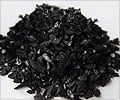Researchers from the University of Michigan Cardiovascular Center had presented new findings on the properties of the gas carbon monoxide that can cure inflammations in patients who had undergone organ transplants, strokes, or heart attacks.
In a recent study the scientists had found that inhaling small amounts of carbon monoxide for several weeks after transplant surgery prevented the development of a lethal inflammatory reaction in experimental mice receiving transplanted trachea, or windpipes.If carbon monoxide therapy works as well in human patients as it does in mice, it could prevent an inflammatory response, called obliterative bronchiolitis, which develops in nearly 50 percent of all patients who receive a lung transplant from an unrelated donor.
Results of the current study were published July 18 in the most recent issue of the Journal of Experimental Medicine (JEM).
The research team had focused on the relationship between carbon monoxide and nitric oxide – two poisonous gases produced by different types of cells in the body. Their research findings suggest that a patient’s chances of living or dying after a lung transplant depend, in large part, on the outcome of an internal power struggle between two enzymes that control cellular production of these gases.
The researchers say that Hmox and carbon monoxide gases are the body’s way of trying to limit tissue inflammation and injury induced by iNOS and nitric oxide during transplant rejection. Their data show that localized CO production provides critical protection against the OB induced by iNOS expression. It’s a balancing mechanism. When Hmox expression goes up, it reduces iNOS expression and suppresses a key-signaling pathway involved in the immune response.
The scientists had studied two types of experimental mice – one group lacked the gene for the Hmox enzyme and was unable to synthesize carbon monoxide. Another group produced unusually high levels of Hmox and CO. When the scientists’ transplanted windpipes from one type of mouse into the other, genetic differences between the two strains of mice triggered transplant rejection, inflammation and significant narrowing of the airway in the transplant recipients.
Advertisement
Source: Newswise
Advertisement
Obliterative Bronchiolitis: This is a common complication that may arise in patients of lung transfer surgery that occurs when the patient’s immune system rejects the transplanted lung and lets the body’s T cells attack the tissue as a foreign object. This remains the leading cause of death for such patients, as often for these patients re-transplant is not a feasible solution.
Carbon Monoxide: This is a colorless odorless gas that is produced by incomplete combustion of gas, oil, wood, coal etc used in burners, stoves, fuel appliances and open fires. High level of accumulated carbon monoxide due to faulty maintenance or poor installation of the apparatus can cause oxygen displacement in the blood stream to cause major harm to the body.







